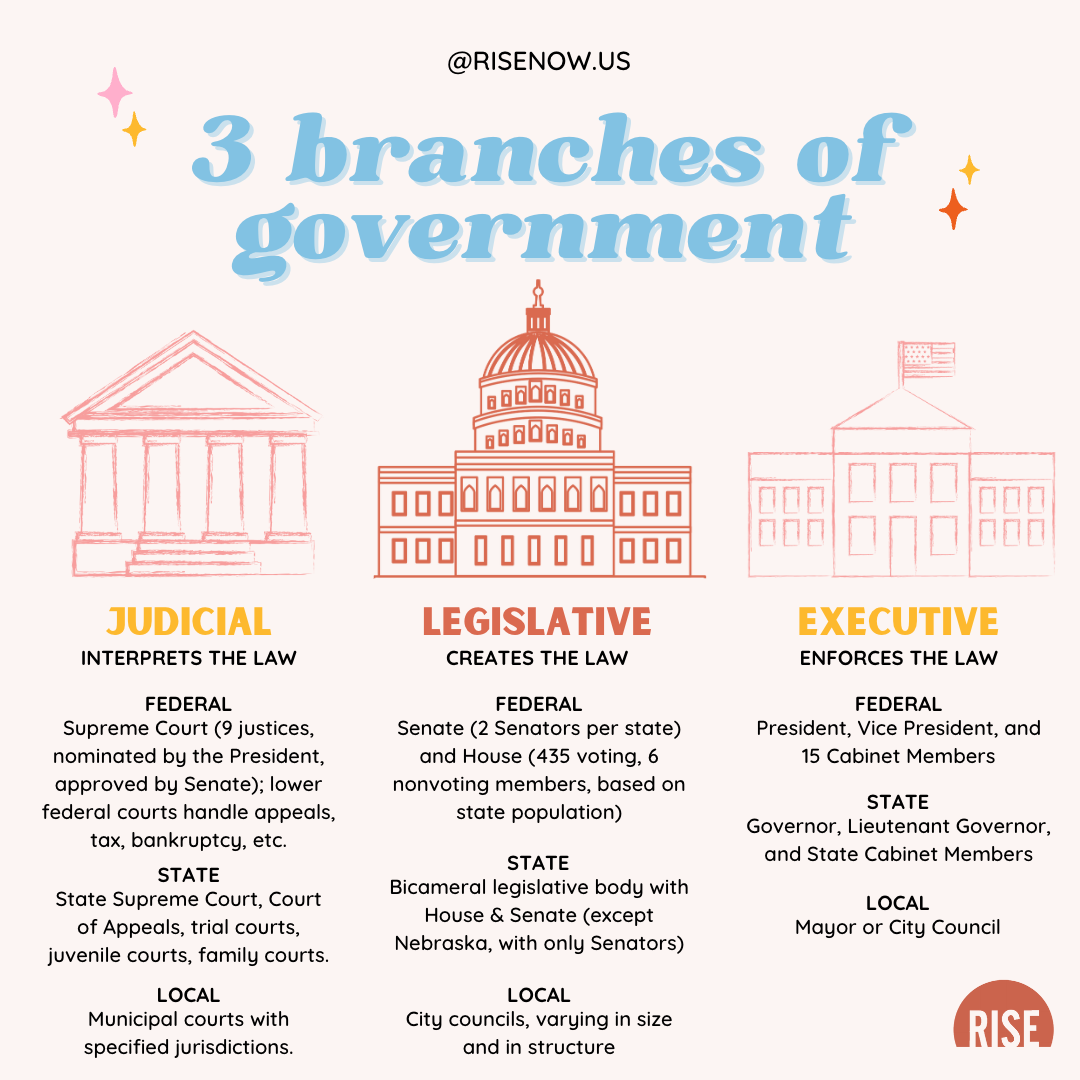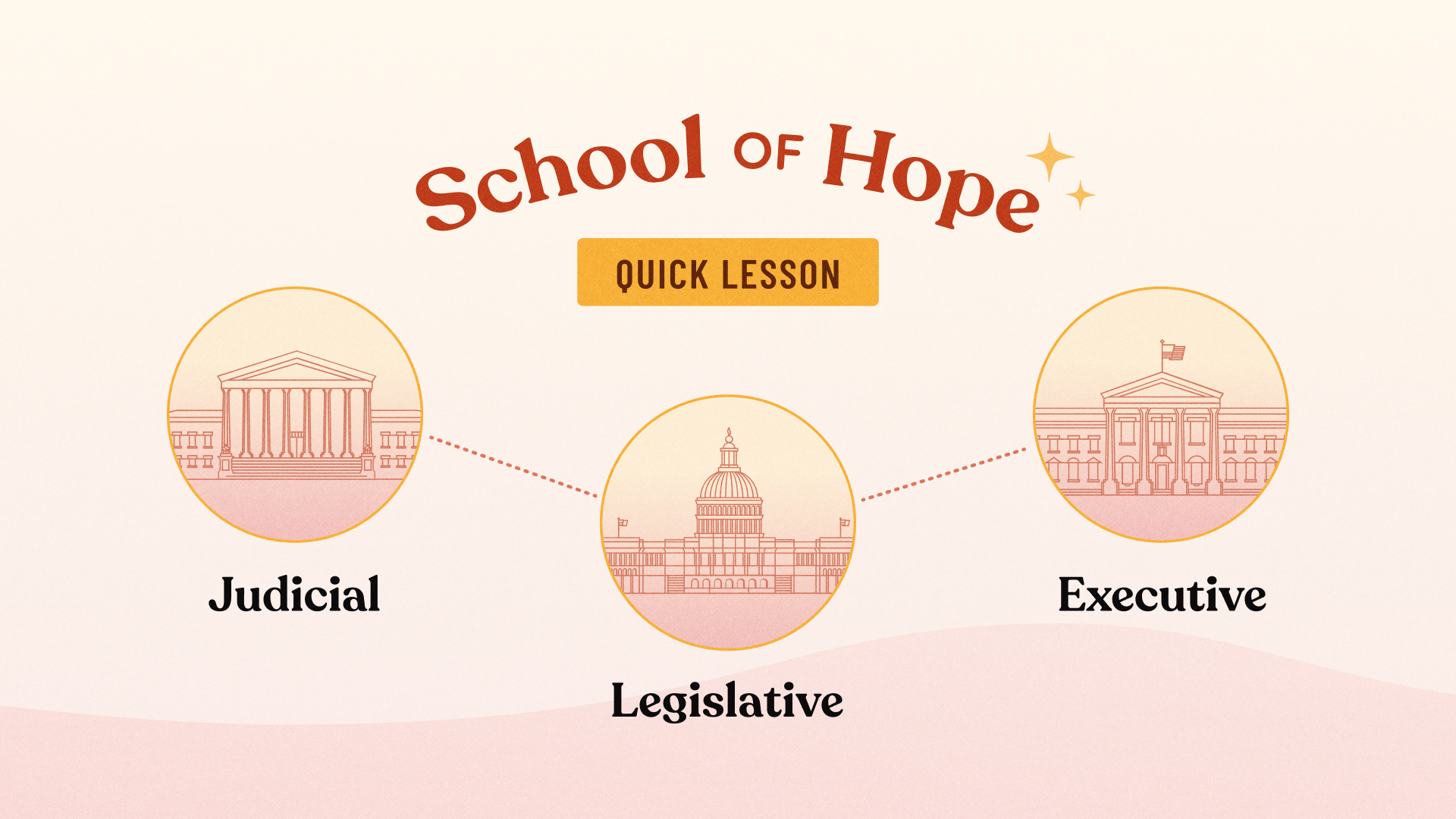Knowing the three branches of government is key to passing your law. Those three branches break down as:
Legislative
The legislative branch is made up of the House and Senate, collectively known as the Congress. The legislative branch makes all laws, declares war, regulates interstate and foreign commerce and controls taxing and spending policies.
- Federal – Senate (2 Senators per state) and House (435 voting, 6 nonvoting members, based on state population)
- State – Bicameral legislative body with House and Senate (except Nebraska, with only Senators)
- Local – City councils, varying in size and in structure
Judicial
The Judicial Branch, under Article III of the Constitution, interprets, explains, and applies the laws. This branch does so by hearing and making decisions on various legal cases in court.
- Federal – Supreme Court (9 justices, nominated by the President and approved by the Senate); lower federal courts handle appearls, tax, bankruptcy, etc
- State – State Supreme Court, Court of Appeals, trial courts, juvenile courts, family courts
- Local – Municipal courts with specified jurisdictions
Executive
The executive branch consists of the President, their advisors, as well as various departments, and is responsible for enforcing the laws of the land.
- Federal – President, Vice President, and 15 Cabinet Members
- State – Governor, Lieutenant Governor, and State Cabinet Members
- Local – Mayor or City Council

You can go through the legislative, judicial, or executive branch – but at Rise, we always recommend the legislative branch first. Not only is it cost effective, it also provides the most enduring action out of the three.




